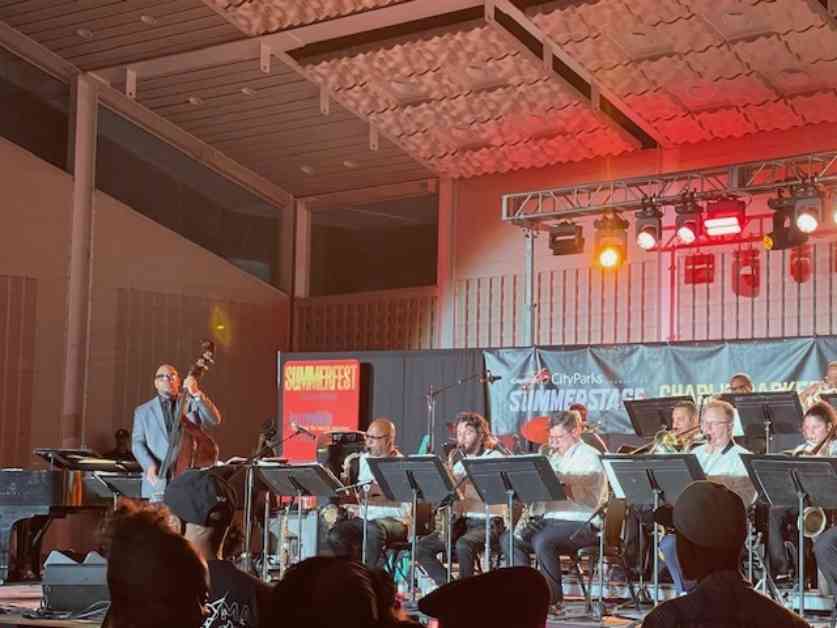The Charlie Parker Jazz Festival: A Celebration of Jazz Evolution
The Charlie Parker Jazz Festival is a beloved annual event that showcases the evolution of jazz music, paying tribute to the legendary musician who revolutionized the genre. This year, the festival kicked off with a bang, featuring a lineup of talented musicians who captivated the audience with their unique blend of traditional jazz and contemporary influences. From big band orchestras to intimate quartets, the festival offered a diverse range of performances that highlighted the rich history and vibrant future of jazz music.
Exploring the Dance Evolution of Jazz
The evolution of jazz music has been closely intertwined with the art of dance, with both forms of expression influencing and inspiring each other over the years. In the early days of jazz, big band orchestras dominated the scene, drawing huge crowds of dancers to ballrooms across the country. The infectious rhythms and lively melodies of jazz music provided the perfect backdrop for social dancing, creating a vibrant and energetic atmosphere that captured the hearts of audiences everywhere.
As jazz music continued to evolve, a shift began to occur in the way it was received by audiences. Small subsets of listeners started to gather around the bands, choosing to stand and listen rather than join in the dancing. This marked the beginning of jazz as concert music, with a growing emphasis on listening rather than dancing. While dance music remained an integral part of jazz, the concert experience became increasingly popular, paving the way for a new era in jazz performance.
The Charlie Parker Jazz Festival: A Musical Journey
The Charlie Parker Jazz Festival is a celebration of the legacy of one of the most influential figures in jazz history. Named after the iconic musician who pushed the boundaries of the genre and redefined its possibilities, the festival honors Parker’s contributions to jazz music and his lasting impact on musicians and audiences alike. This year’s festival featured a diverse lineup of performers who paid homage to Parker’s legacy while showcasing their own unique interpretations of jazz music.
The festival’s opening night was a testament to the enduring power of jazz music, with performances that ranged from somber and introspective to lively and exuberant. The evening began on a poignant note, with a tribute to the late guitarist Russell Malone, a beloved figure in the jazz community who passed away unexpectedly earlier that day. The news of Malone’s death cast a shadow over the festival, but his memory was honored through heartfelt performances that celebrated his life and musical legacy.
The festival’s lineup featured a mix of established jazz veterans and up-and-coming talents, each bringing their own distinctive style and sound to the stage. Trumpeter Wallace Roney Jr. and his quartet delivered a vibrant and energetic set that paid homage to the classic jazz traditions while incorporating modern influences. Roney’s dynamic trumpet playing and his cousin Kojo’s skillful drumming captivated the audience, setting the stage for an evening of unforgettable music.
The highlight of the evening came when bassist and bandleader Christian McBride took the stage with his 17-piece big band, delivering a performance that brought the crowd to their feet. McBride’s charismatic presence and virtuosic bass playing electrified the audience, drawing them into a mesmerizing musical journey that combined elements of funk, jazz, and soul. The band’s set paid homage to Russell Malone and other jazz legends, showcasing the depth and diversity of the jazz tradition.
As the night unfolded, the audience was treated to a series of captivating performances that showcased the range and versatility of jazz music. Vocalist Melissa Walker’s soulful rendition of classic jazz standards captivated the crowd, while the band’s energetic and hard-hitting arrangements kept the energy levels high. The music flowed seamlessly from one song to the next, creating a cohesive and immersive experience that transported the audience to another world.
The Evolution of Jazz Dance at the Charlie Parker Festival
One of the most striking aspects of the festival was the evolution of jazz dance, with a significant portion of the audience choosing to get up and move to the music. The festival’s location in Harlem’s Marcus Garvey Park, a historic site that was once home to the legendary Savoy Ballroom, set the stage for a night of dancing and celebration. The music of Christian McBride’s big band inspired spontaneous dancing among the audience, creating a festive atmosphere that harkened back to the golden age of jazz.
The fusion of music and dance at the festival reflected the interconnected nature of jazz and dance, highlighting the symbiotic relationship between the two art forms. Jazz music has always been closely linked to dance, with its infectious rhythms and lively melodies inspiring movement and expression. At the Charlie Parker Festival, the spirit of jazz dance was alive and well, with audience members of all ages and backgrounds coming together to share in the joy of music and movement.
The festival’s emphasis on jazz dance was a nod to the genre’s roots in social dancing, a tradition that has been passed down through generations of jazz musicians and dancers. From the swinging rhythms of the big band era to the soulful grooves of modern jazz, the festival showcased the enduring appeal of jazz music as a catalyst for creativity and expression. The evolution of jazz dance at the festival was a testament to the power of music to bring people together and inspire joy and celebration.
Overall, the Charlie Parker Jazz Festival was a celebration of the evolution of jazz music and dance, paying tribute to the genre’s rich history and vibrant future. The festival brought together a diverse community of musicians, dancers, and music lovers who shared in the magic of jazz music and its ability to transcend boundaries and unite people from all walks of life. As the festival continues to grow and evolve, it remains a beacon of creativity and inspiration for jazz enthusiasts everywhere.


